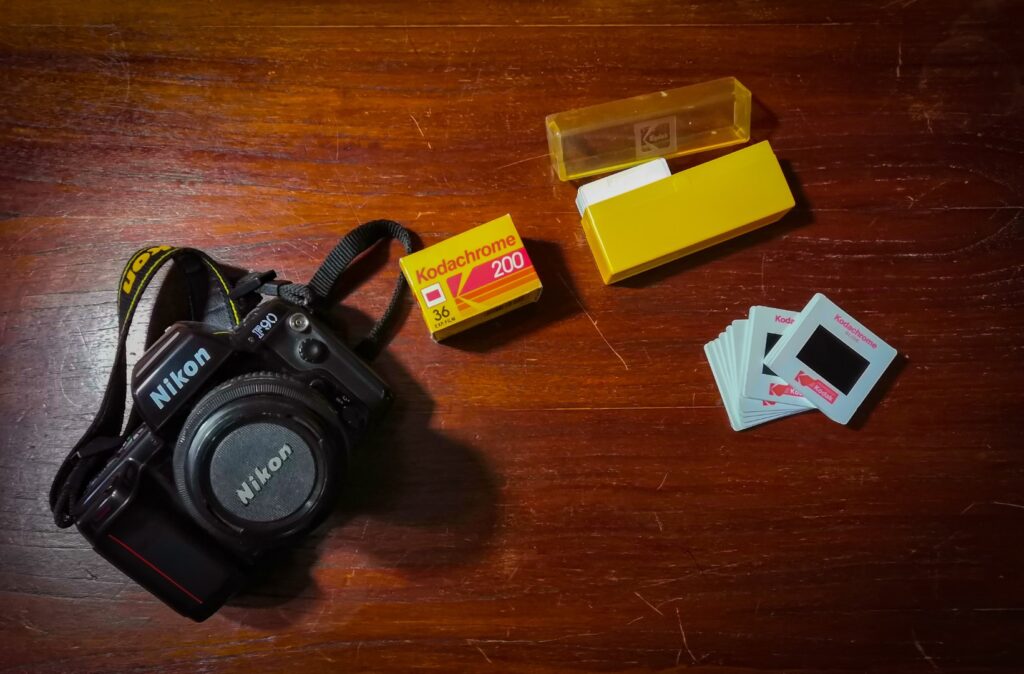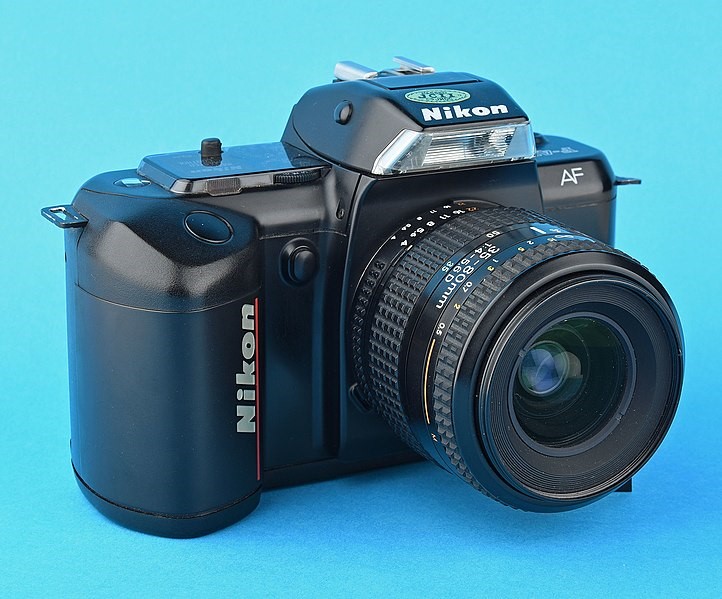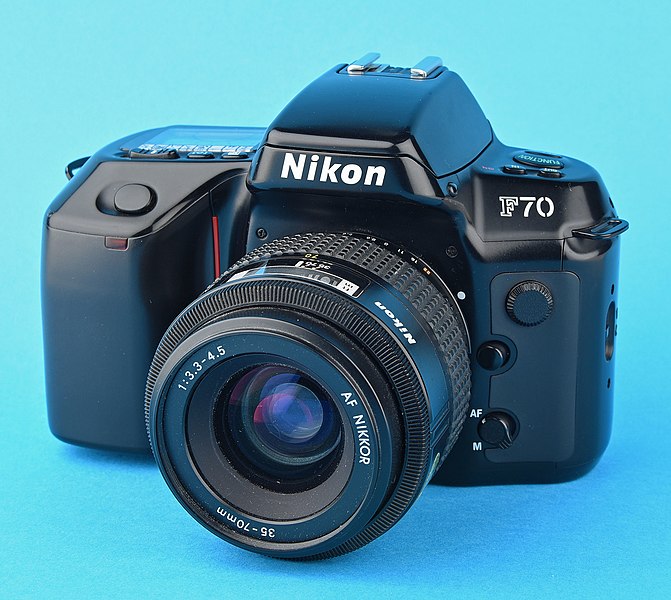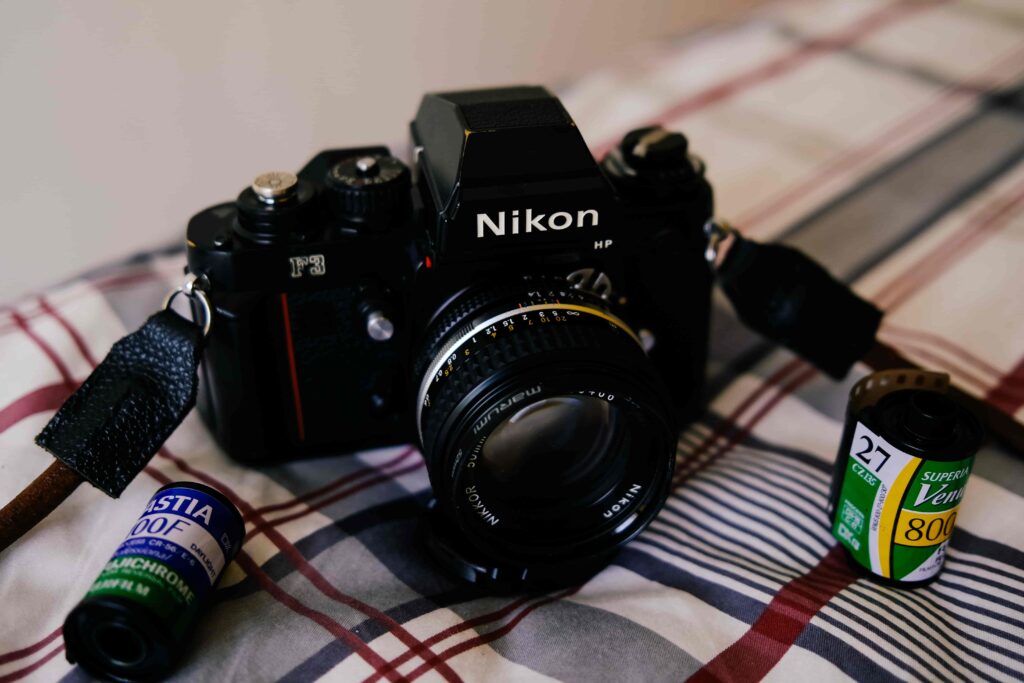The Nikon F90, a 35mm film camera, was introduced in the 1990s. This article provides a comprehensive review of the camera, discussing its features, functions, and performance.
Recommended Film
The Nikon F90 is compatible with any 35mm film. Here are three commonly used options:
- Kodak Ektar 100: Noted for fine grain and vibrant colors, it’s suitable for outdoor landscapes and portraits in good light.
- Ilford HP5 Plus: This is a versatile black and white film with a fine grain structure and broad tonal range. Its ISO 400 rating allows use in various lighting conditions.
- Fujifilm Superia X-TRA 400: A color negative film with fine grain and good color rendition. It has an ISO of 400, making it useful in different lighting conditions.
Battery Type for the Nikon F90
The Nikon F90 uses four AA batteries. Users can opt for either alkaline or rechargeable Ni-MH batteries, both widely available. Rechargeable Ni-MH batteries may offer cost savings for frequent users.
Overview of the Nikon F90
Manufactured by Nikon between 1992 and 2001, the Nikon F90 (N90 in the US) is a 35mm SLR camera. It replaced the Nikon F-801 and was notable for its autofocus speed. An upgrade, the Nikon F90x, offered enhanced performance and usability. The following sections will delve into the camera’s features, draw comparisons with similar models, and answer frequently asked questions about the Nikon F90.
Nikon F90: Understanding the Features
Autofocus Capabilities
The Nikon F90’s standout feature is its autofocus speed. A significant improvement from previous Nikon models, the F90’s autofocus system uses a ‘peanut’ motor within the camera body, driving the lens via a mechanical link. This system is a divergence from Canon’s system, which employs lens-integrated motors.
Robust Construction
The Nikon F90 was designed to cater to the semi-professional market, striking a balance between professional-level performance and accessibility. This camera, along with its updated version, the F90x, are robustly built, providing a level of durability that appeals to professional photographers.
Accessories
Several accessories were developed to enhance the functionality of the Nikon F90, such as the MB-10 battery grip and the MF-26 data back. The battery grip offers improved handling, especially when using larger lenses, while the MF-26 data back provides expanded camera options including multiple exposure modes and flash exposure bracketing.
Nikon F90’s Role in the Digital Era
The Nikon F90 played a significant role in the early era of digital cameras. Kodak, in collaboration with Nikon, used the F90 and F90s bodies as the base for the Kodak DCS 400 series of digital SLRs. These cameras were mounted on a Kodak digital back with minor modifications. Moreover, the Kodak/Nikon N90S-based digital camera system was also used by NASA on the Space Shuttle programs and the International Space Station.
Comparison with Similar Models
The Nikon F90 was developed as a bridge model between the Nikon F-801 and the professional-grade Nikon F5. Although the F90’s autofocus system was faster than that of the F-801, it did not match the speed of the professional-grade Canon autofocus SLRs of the time. However, with the release of the upgraded F90x, Nikon improved the autofocus speed, achieving a performance that met professional standards.
Frequently Asked Questions about the Nikon F90
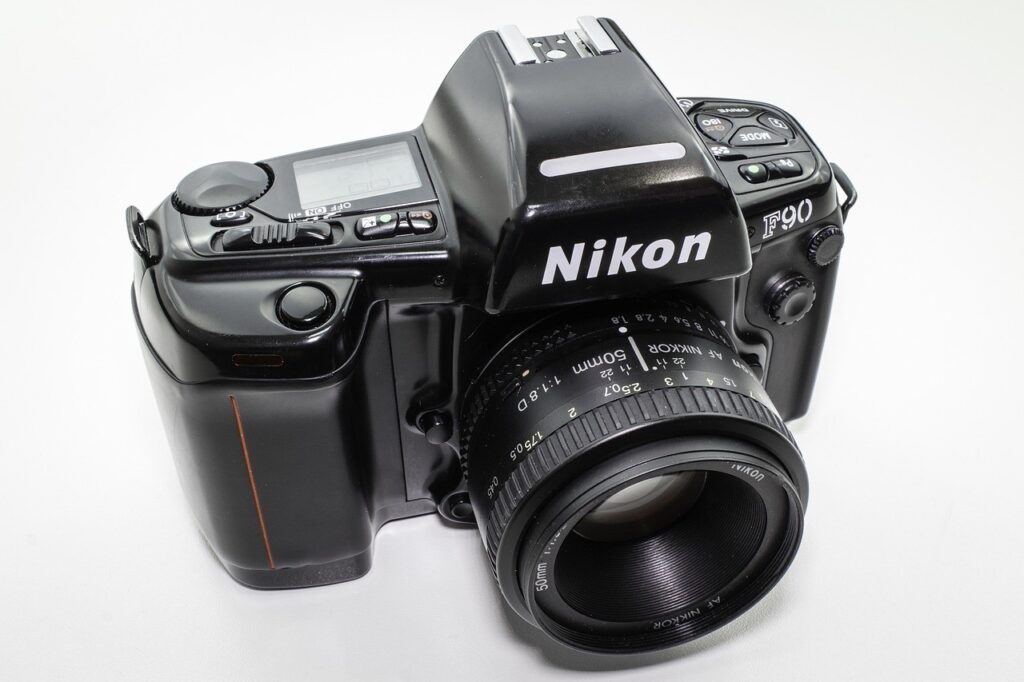
Is Nikon F90 Full Frame?
Yes, the Nikon F90 is a full-frame camera. It uses 35mm film, which is equivalent to a full-frame sensor in digital terms.
Is Nikon F90 a Good Camera?
The Nikon F90 is considered a reliable camera. It provides good image quality and performance for a film camera, and its robust construction makes it durable.
When Did Nikon F90 Come Out?
The Nikon F90, a 35mm film camera, was released in 1992.
Nikon F90 Lens Compatibility
The Nikon F90 uses lenses with the Nikon F mount. It also supports autofocus with AF-I/AF-S series lenses with built-in motors. However, it does not fully support G lenses without aperture rings under manual or aperture priority modes.
What is the Frame Rate of the Nikon F90?
The Nikon F90 has a continuous shooting frame rate of 4.1 frames per second.
Can the Nikon F90 Support Long Exposure Times?
Yes, with the MF-26 data back, the Nikon F90 can support very long exposure times, up to 12 hours.
How is the Nikon F90 for Black and White Photography?
The Nikon F90 is excellent for black and white photography, especially when paired with a good quality black and white film like the Ilford HP5 Plus.
Nikon F90: A Technical Overview
| Specification | Description |
|---|---|
| Type of Camera | Single lens reflex camera |
| Film Format | 35mm |
| Picture Format | 24 x 36 mm |
| Lens Mount | Nikon F lens mount |
| Focus | Autofocus |
| Exposure Times | 1/8000 s to 30 s, Bulb |
| Light Meter | Yes |
| Exposure Modes | Program automatic, Aperture priority, Shutter priority, Manual mode |
| Built-in Flash | No |
| Flash Connection | Hot Shoe |
| Tripod Mount | Yes |
| Power Supply | 4x AA batteries |
| End of Production | 2001 |
| Production Duration | 9 years |

